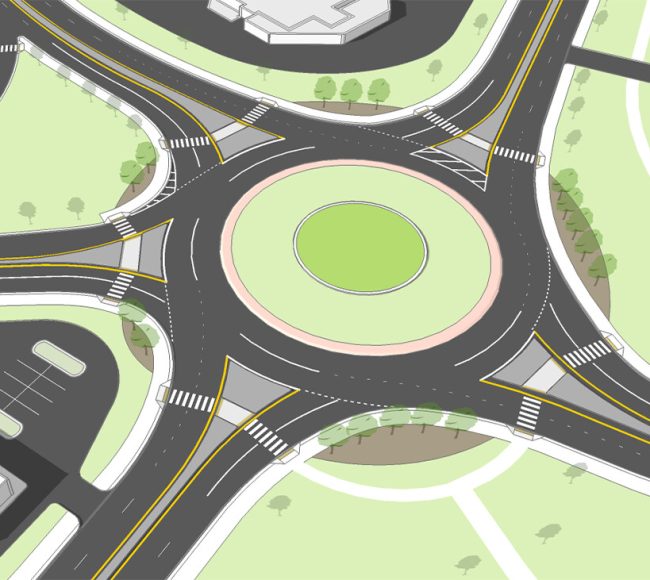Sponsored by Transoft Solutions
DATE: Wednesday, December 6, 2023
TIME: 8 am PT – 12: 30 pm PT / 11 am ET – 2:30 pm ET
DURATION: 4 Hours (2 x 2 Hour Sessions)
Roundabouts have been gaining popularity in North America as a viable alternative to traditional intersections. As a means of traffic control and flow, roundabouts are known for minimizing accidents by enhancing road safety and efficiency.
Unfortunately, a poorly designed roundabout can cause problems with public perception. The public typically cannot discern a well-designed roundabout from one that is inadequately designed. Once they have a poor opinion of one, it can drastically affect their perception of all other roundabouts, no matter how well laid out they are.
This live training course will take you through the fundamentals in addition to the ins and outs of properly designing an effective roundabout that supports the needs of the community.
Goals & Agenda
Roundabout training course goals
- Why consider a roundabout
- Where should a roundabout be considered
- What elements contribute to roundabout design
- How to design elements to interact holistically and produce a safe and efficient intersection
- How to determine if the roundabout is an acceptable design
- Understand inherent benefits to non-motorized users and optimize those (benefits) with good design decisions
- Define components of accessible design
- Consider factors of appropriate traffic control devices (TCD)
- Identify different ways to accommodate bicycle traffic
- Learn how to reduce collisions and increase efficiency in multilane RBs
Course Agenda
Session 1
Benefits of Roundabouts
Solving intersection challenges with circular designs
Roundabout Geometrics
Combine individual design elements for a successful roundabout project
Evaluate Roundabout using Performance Measures
Determine insufficiencies in design before a roundabout is constructed
Session 2
Roundabouts for Non-Motorized Users
Creating intersections that encourage active transportation
Beyond the Roundabout Geometrics
Supplemental elements such as signing, striping, and landscaping to enhance roundabout performance
Challenge accepted: Multilane Designs
Common collisions in multilane designs and how to avoid constructing a problem intersection
Use of Technology /Tools Geometric Design
Analysis: Design Vehicle, Speed, Path Overlap, Ground Clearances
INSTRUCTOR

About the instructor:
Since 2001 Rachel Price, PE, has been dedicated to working on roundabout designs and projects with the philosophy that the best roundabout design will dictate appropriate driver behavior. After 16 years working as a roundabout specialist for Reid Middleton, Rachel fulfilled her dream of opening what she called a Roundabout Help Desk to focus solely on assisting others in their roundabout plans.
